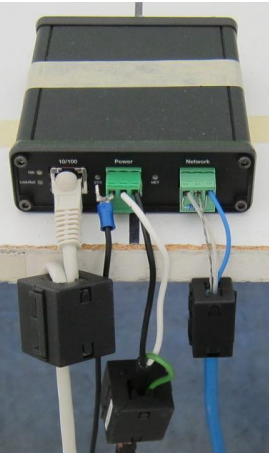
ProSoftAN-X2-AB-DHRIO A-B Remote I/O Adapter Module
The AN-X2 uses the same hardware interface to the automation networks.
Differences in Remote I/O Operation
The diagnostic counters are slightly different. The diagnostic tags for the AN-X2 are
different to match the diagnostic counters.
The module uses listen only connections instead of input only connections. You can now
have more than one listen only connection. Listen only connections require an owning
connection (input only connections do not).
The AN-X2 module now supports unicast as well as multicast connections.
Using the MicroSD Card
The AN-X2 microSD card stores configuration data and firmware.
The are no restrictions on the size or speed of the card. The format must be FAT-16 or
FAT-32.
An adapter is provided so you can insert the microSD card in an SD slot in your
computer.
The card must be present while the AN-X2 is running.
WARNING! Do not remove the card while the AN-X2 is powered on!
If the AN-X2 is inaccessible from Ethernet because of its settings, you can remove the
card and edit the file config.txt. Refer to page 14 for details.
Reinsert the card in the slot at the back of the AN-X2, with the pins facing up.
WARNING!
If you remove the card to edit the configuration file, push the card in
straight or the card might fall inside the case and you will have to
disassemble the AN-X2 to retrieve it .
AN-X2 Modes of Operation
There are two AN-X2 modes of operation:
• Maintenance mode. The AN-X2 runs the maintenance firmware at startup.
It performs diagnostics (memory tests, etc), copies any changes from the
microSD card. If there are no errors, it starts the AN-X2 in production mode.
• Production mode. This is the normal runtime mode of operation.
Prevent Electrostatic Discharge
The module is sensitive to electrostatic discharge.
WARNING! Electrostatic discharge can damage integrated circuits or semiconductors. Follow these
guidelines when you handle the module:
• Touch a grounded object to discharge static potential
• Do not touch the connector pins
Power
AN-X requires a DC power input of anywhere from 12 to 24 VDC.
Left to right the pins on the power connector are chassis ground, negative voltage and
positive voltage.
The chassis ground should be connected.
Power consumption is 200 mA @ 12VDC or 100mA @ 24VDC.
The part number for the power connector is Phoenix MSTB 2.5/3-ST-5.08
Contact us if you need a suitable wall adapter.
Cabling and Termination
Follow Allen-Bradley cabling recommendations for remote I/O. Refer to Approved
Vendor List for DH, DH+, DH-485, and Remote I/O Cables, publication ICCG-2.2,
February 1996.
On the AN-X module, the connections are line 1, shield, line 2.
Line 1 on the AN-X is closest to the power connector.
Check the wiring to ensure that line 1 on the AN-X is connected to line 1 on the PLC, and
so on.
Terminate both ends of a remote I/O network by using external resistors attached to the
physical ends of the network. There should be two and only two terminators on the
network.
Use 82 ohm resistors if the network operates at 230.4 kbps or if the network operates at
57.6 kbps or 115.2 kbps and none of the devices in the table below are present. The
maximum number of physical devices on the network is 32.
Use 150 ohm resistors if the network contains any of the devices in the table below, or if
the network operates at 57.6 kbps or 115.2 kbps and you do not require the network to
support more than 16 physical devices.
Software Installation
You must uninstall any previous version of the software before you can install a new
version. Use the Windows Control Panel Add and Remove Programs or Programs and
Features to remove the old version.
Run the program AnxAbRioSetup.msi in the ABRIO folder to install the configuration
and monitoring software.
CE Installations
If you are installing the AN-X2 in a location which requires CE, install the following
ferrites or their equivalents on the cables:
Steward 28A2024-0A2 on Ethernet cable close to module, one loop
Steward 28A2024-0A2 on power cable
Steward 28A2025-0A2 on DH+/RIO Cable





























































































































